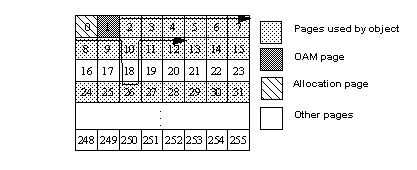The data page cluster ratio for a table measures the effectiveness of large I/O for table scans. Its use is slightly different depending on the locking scheme.
For allpages-locked tables, a table scan or a scan that uses a clustered index to scan many pages follows the next-page pointers on each data page. Immediately after the clustered index is created, the data page cluster ratio is 1.0, and pages are ordered by page number on the extents. However, after updates and page splits, the page chain can be fragmented across the page chain, as shown in Figure 5-2, where page 10 has been split; the page pointers point from page 10 to page 26 in another extent, then to page 11.
Figure 5-2: Page chain crossing extents in an allpages-locked table

The data page cluster ratio for an allpages-locked table measures the effectiveness of large I/O for both table scans and clustered index scans.
For data-only-locked tables, the data page cluster ratio measures how well the pages are packed on the extents. A cluster ratio of 1.0 indicates complete packing of extents, with the page chain ordered. If extents contain unused pages, the data page cluster ratio is less than 1.0.
optdiag reports two data page cluster ratios for data-only-locked tables with clustered indexes. The value reported for the table is used for table scans. The value reported for the clustered index is used for scans using the index.